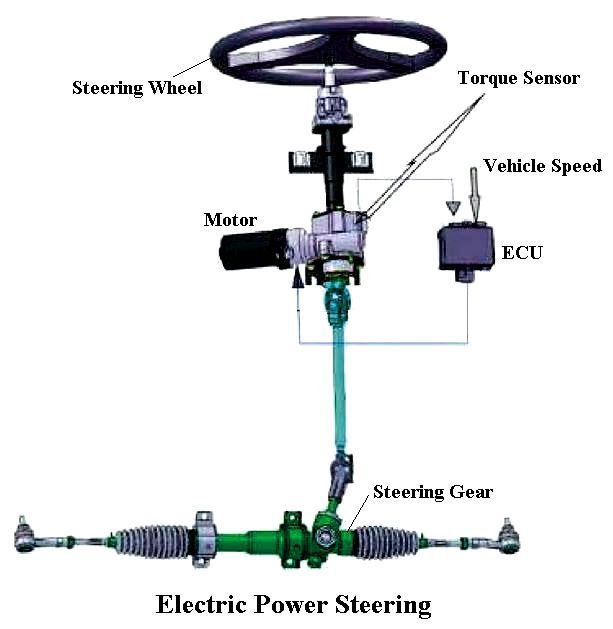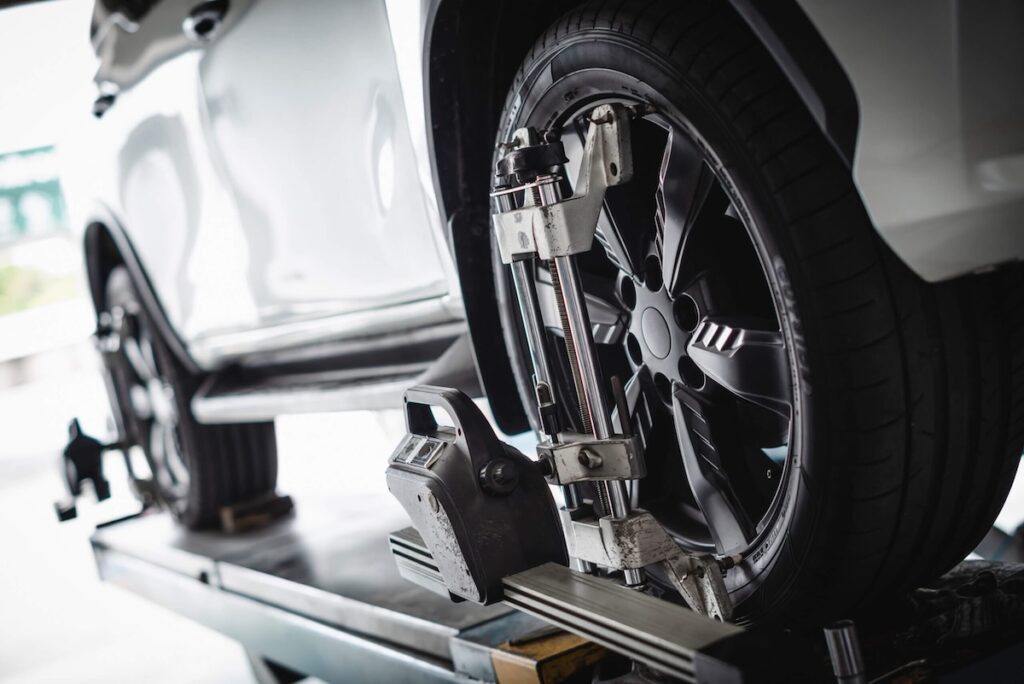Struggling with your Ford’s electric power steering? Issues like stiff steering or dashboard warning lights can be a hassle. Whether you own a Ford F150 or a Super Duty, knowing what’s causing these problems can save you time and cash. Let’s dive into the reasons behind these steering troubles and share simple solutions to get your vehicle steering smoothly again. Stick around for easy-to-follow tips!
What is Electric Power Steering in Ford Vehicles?
Ford’s electric power steering (EPS) makes turning the wheel easier by using an electric motor instead of the older hydraulic systems. This setup is smoother, more efficient, and requires less upkeep, giving you a better driving experience.

Key Parts of Electric Power Steering
The EPS system in Ford vehicles includes a few important parts. The steering wheel links to the steering shaft, which passes your movements to the steering system. An electric motor, usually placed on the steering column or rack, helps make steering effortless based on signals from sensors.
Sensors track the steering wheel’s position, speed, and force. This information goes to the EPS control module, which decides how much help the motor should provide. If you see an EPS warning light on your dashboard, it might mean one of these parts needs attention.
How EPS Differs from Hydraulic Steering
Unlike hydraulic power steering, which uses fluids and pumps, EPS relies on an electric motor. This eliminates messy fluid checks or leak repairs. EPS adjusts steering help based on your speed—more assistance for easy parking at low speeds and firmer control on highways for better handling.
EPS also boosts fuel efficiency since the motor only works when needed. This makes driving your Ford more cost-effective and enjoyable, with precise control on any road.
Typical Ford Electric Power Steering Problems
If your Ford’s steering feels off, you’re not alone. Many drivers deal with EPS issues, from losing steering help to hearing odd noises. These can make driving less comfortable and safe.
Sudden Loss of Steering Help
A common problem is when steering suddenly feels heavy, like you’re fighting the wheel. This could be due to a faulty torque sensor in the steering shaft. You might also notice an EPS warning light. Using a diagnostic tool to check error codes can help find the issue. Regular checks and quick fixes can prevent this from happening.
Steering Wheel Drifting or Pulling
If your steering wheel pulls to one side while driving, the EPS system might be acting up. This could be caused by misaligned wheels or worn steering parts like tie rods or ball joints. Ignoring this can wear out your tires unevenly, which is risky on long trips. Check alignment and parts regularly to avoid this.

Strange Noises When Turning
Hearing clicks or knocks while steering? These sounds might come from the steering rack or column, signaling loose or worn parts. Routine maintenance can catch these issues early. Fix noises quickly to avoid bigger steering problems down the road.
On-and-Off Steering Failure
When power steering works sometimes but fails others, it’s called intermittent failure. This could involve loose or rusty electrical connections or a failing motor. Check and replace any faulty wires or connectors to keep your steering consistent.
How to Diagnose Steering Issues
To fix Ford EPS problems, you need to investigate warning lights, electrical systems, and steering alignment. Each step offers clues to make repairs easier and faster.
Dashboard Warning Lights and Codes
An EPS warning light on your dashboard is a big clue something’s wrong, like a bad sensor or motor. Using an OBD-II scanner can pull specific error codes, such as “C-series” codes, which point to issues in the steering system’s feedback or mechanical parts. These codes guide your next steps.
Checking the Electrical System
A weak battery or bad connections can cause steering issues. Make sure your battery is charged and in good shape. Check fuses and ground connections for damage or looseness, as these can disrupt power to the EPS system. Fix electrical issues quickly to restore smooth steering.
Testing Steering and Alignment
Steering and alignment tests can reveal mechanical problems. If steering feels uneven or the car pulls, it might be an alignment issue. Test steering smoothness when parked and driving. Vibrations or resistance could mean trouble in the steering rack. Regular alignment checks prevent tire wear and keep handling sharp.
Fixing or Replacing EPS Parts
When your Ford’s EPS acts up, you have options. From small fixes to replacing major parts, understanding your choices helps you decide what’s best for your vehicle.
Repair Cost Estimates
Fixing EPS issues can range from cheap to pricey. Simple tasks like cleaning connectors might cost little. Basic troubleshooting without parts replacement often involves just labor fees. If the steering motor or pump needs replacing, costs can hit $1,200 to $1,600, as noted in discussions on Ford F150 forums. Consider your vehicle’s age and issue frequency when choosing repair or replacement.
Preventing EPS Problems
Keeping your Ford’s EPS in top shape means regular maintenance and battery care. These habits help avoid steering issues and keep your drive smooth.
Regular System Checks
Check your EPS system monthly to catch problems early. Note: While EPS doesn’t use fluid like hydraulic systems, ensure all electrical connections are clean and secure. Listen for odd noises like grinding or whining, which could indicate issues. If steering feels heavy or you see an EPS light, inspect immediately to avoid bigger repairs.
Battery Care Tips
Your car’s battery powers the EPS system, so keep it healthy. Test battery voltage regularly, especially if steering issues pop up. Recharge or replace an old or weak battery, particularly if it’s several years old. Clean and tighten battery terminals to ensure steady power, avoiding EPS glitches tied to low voltage.